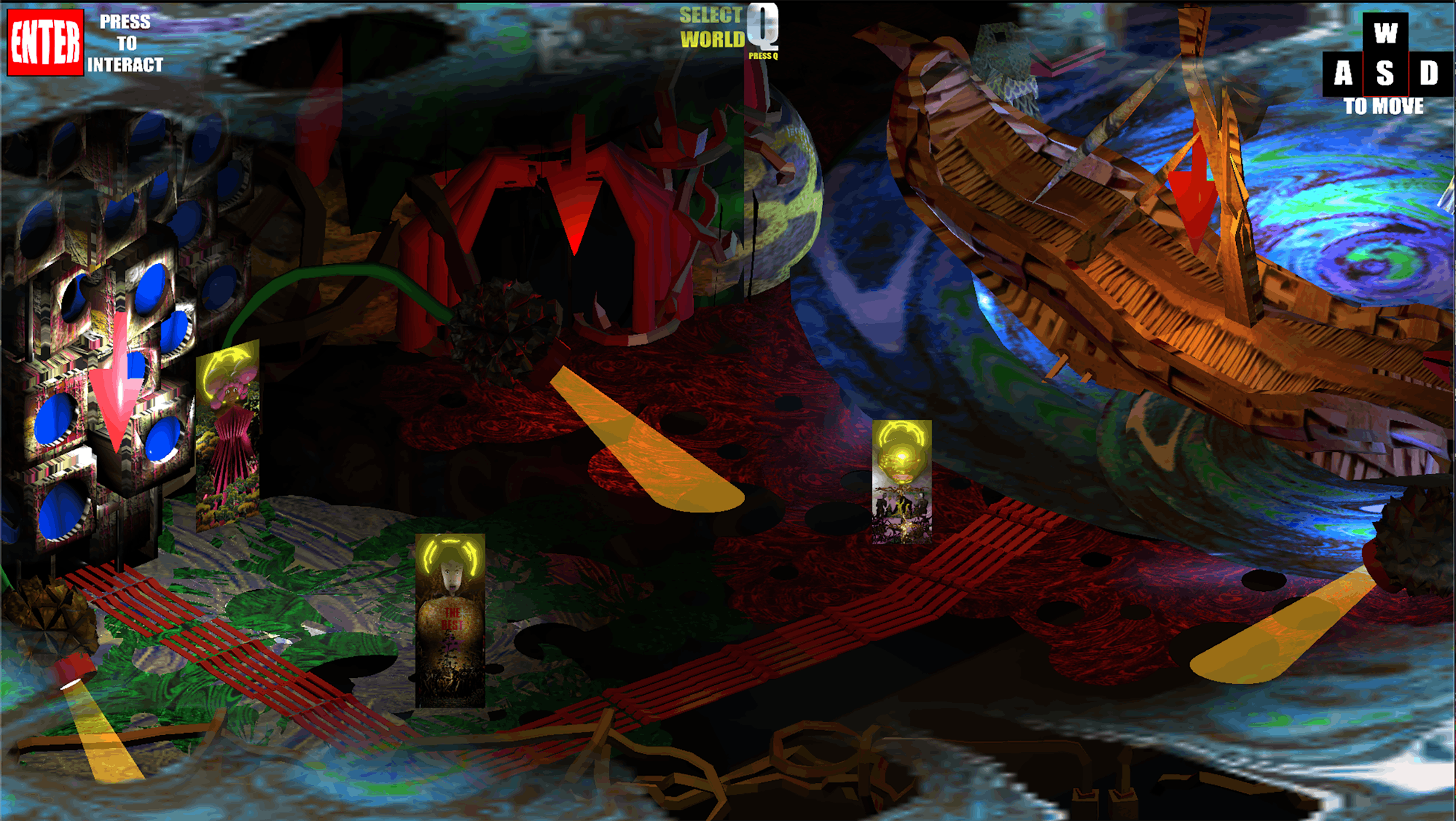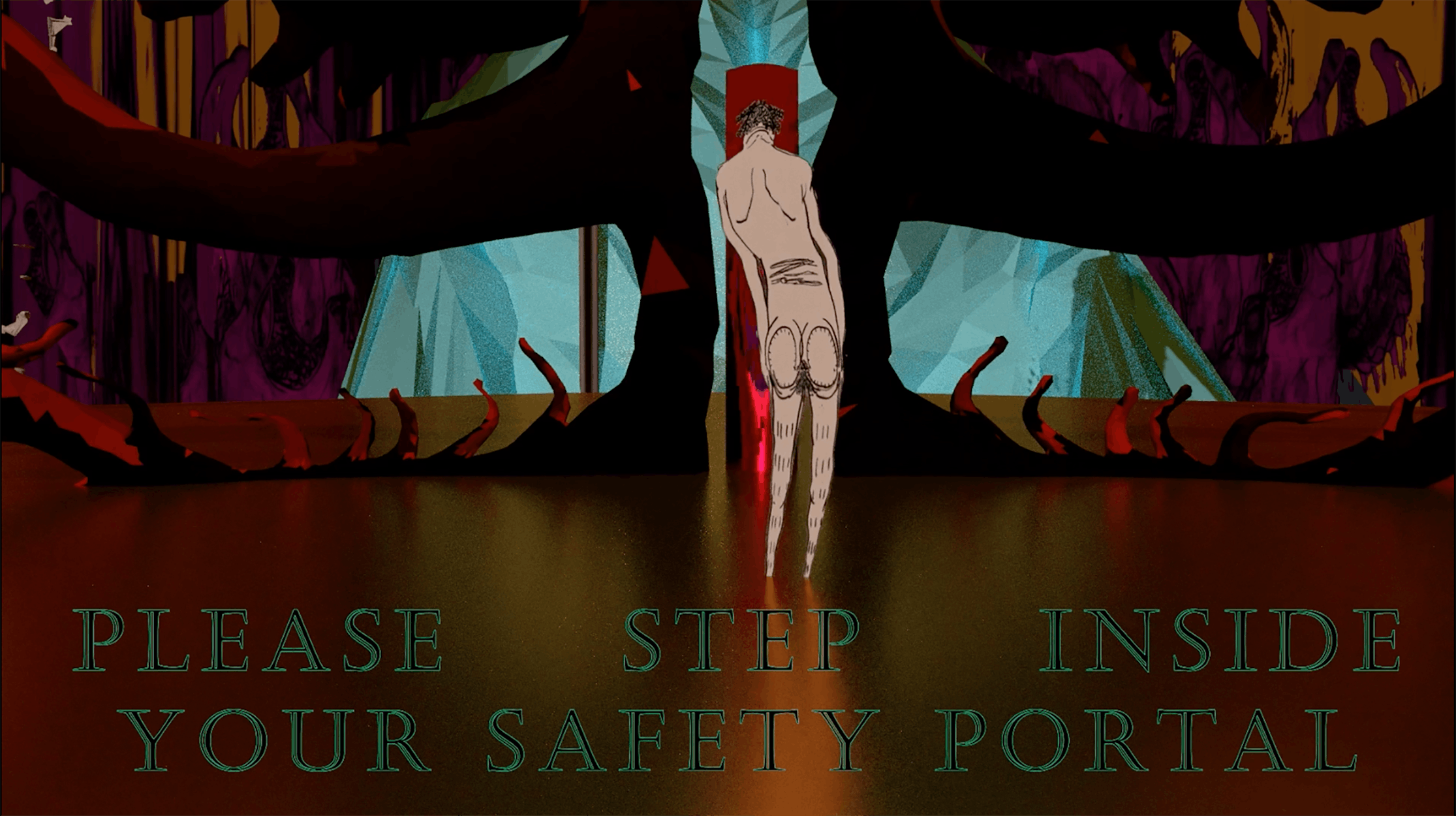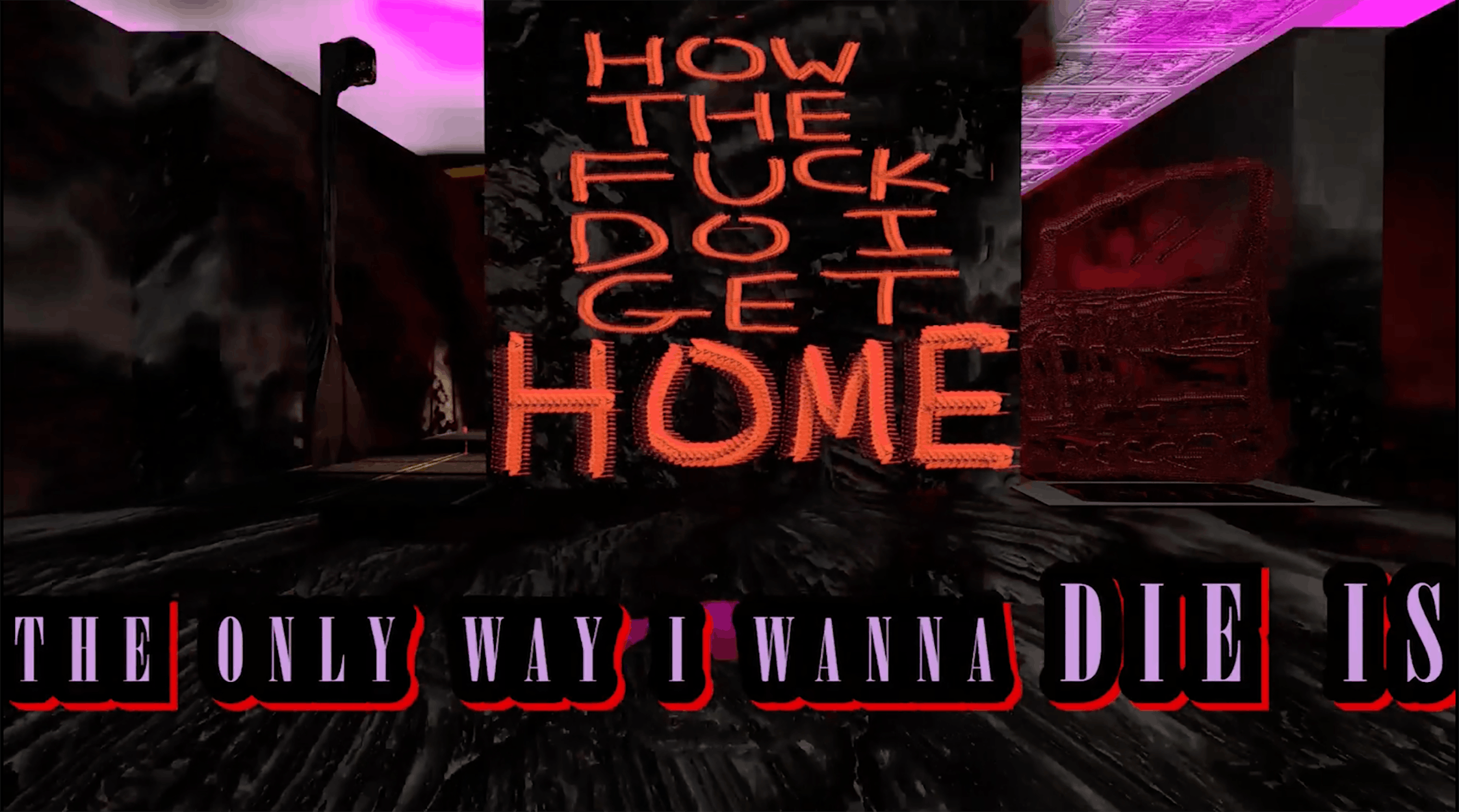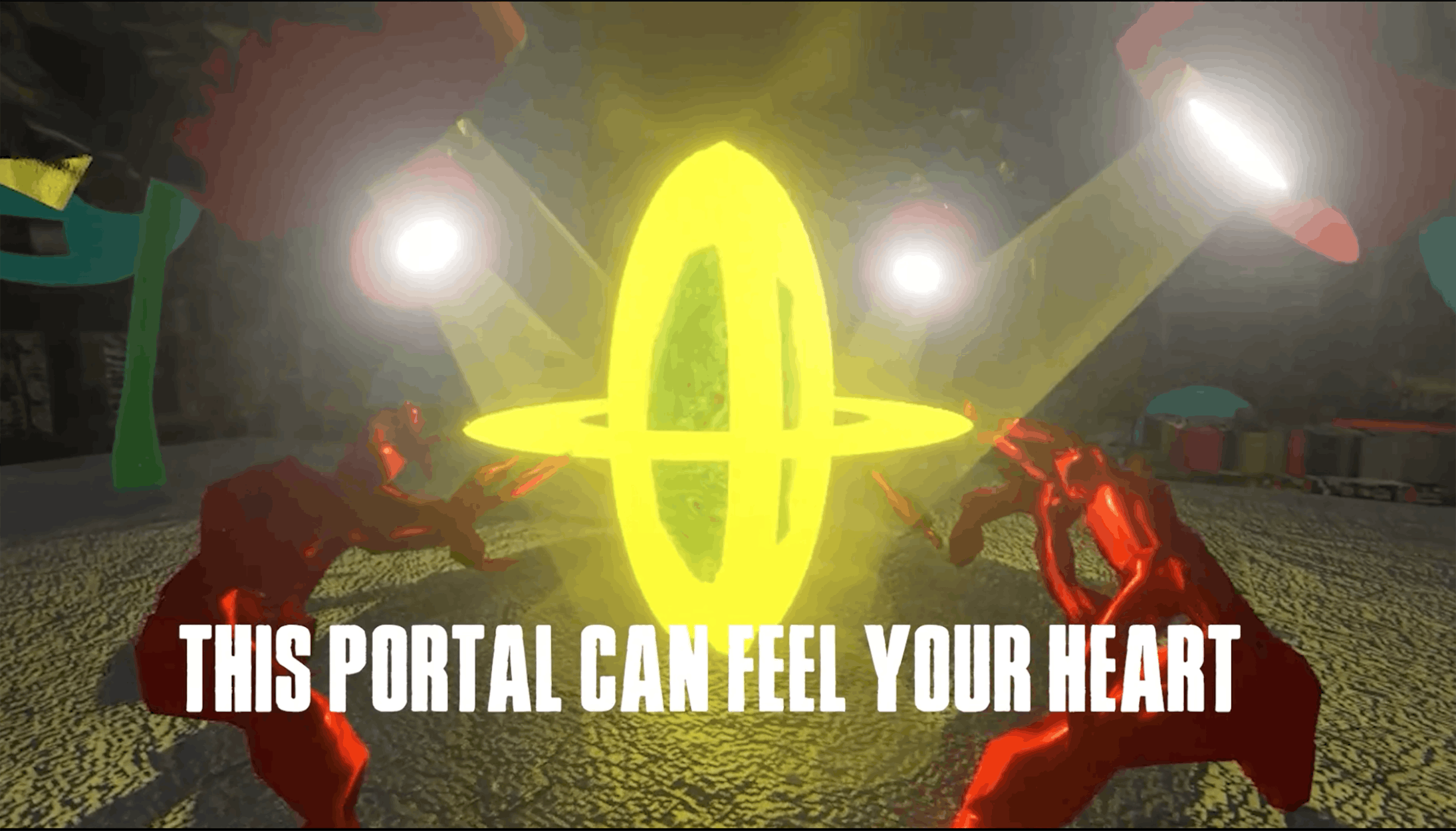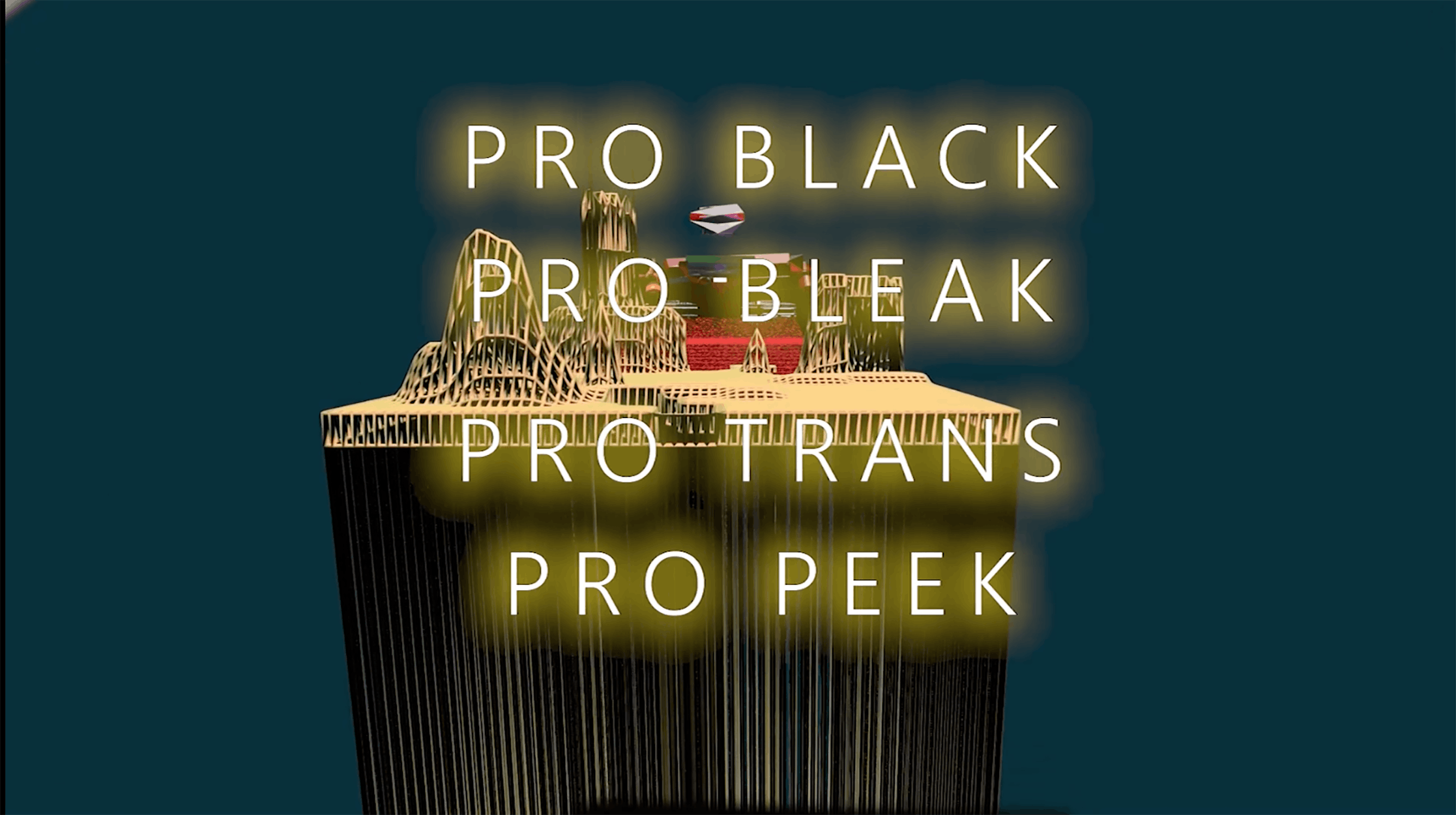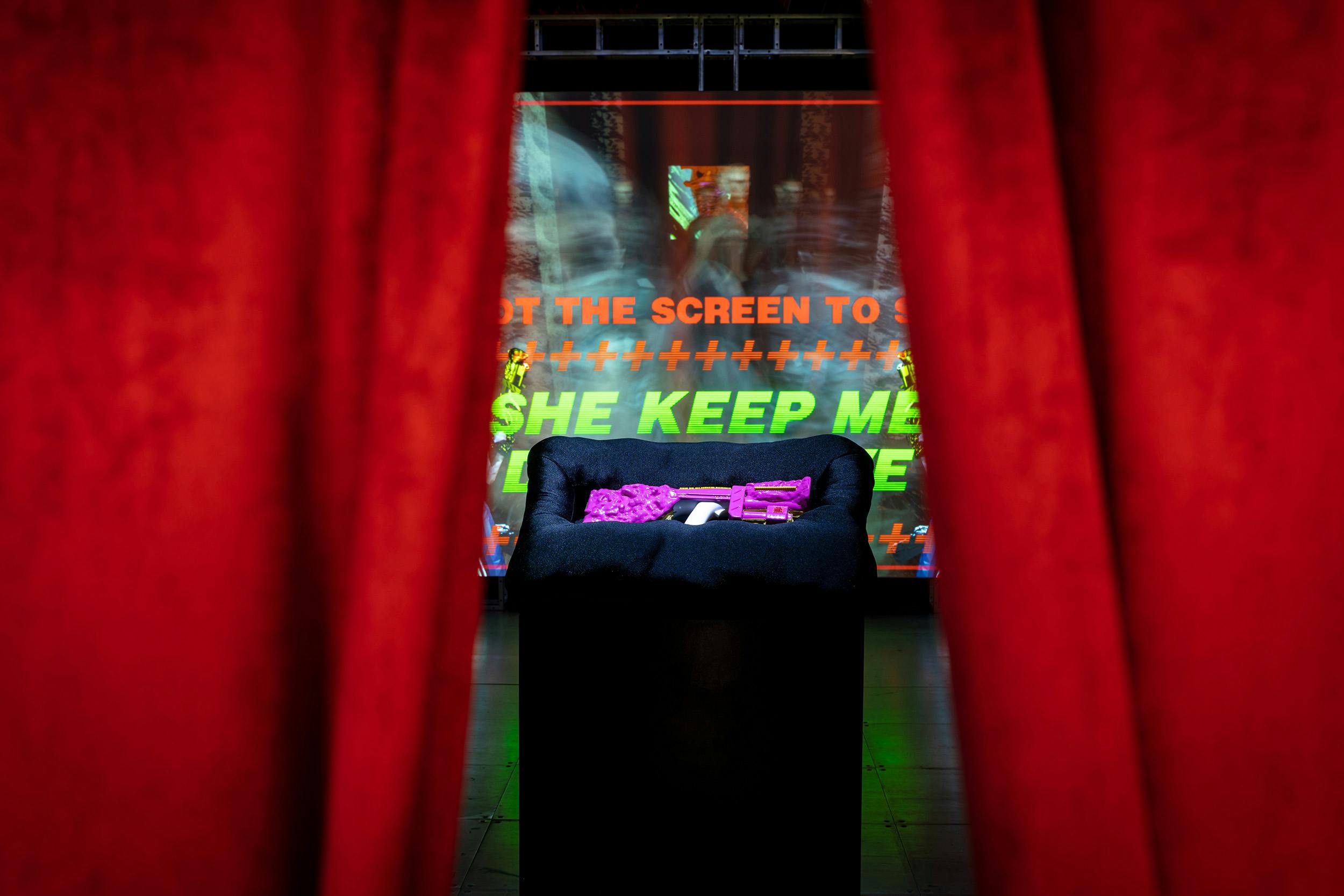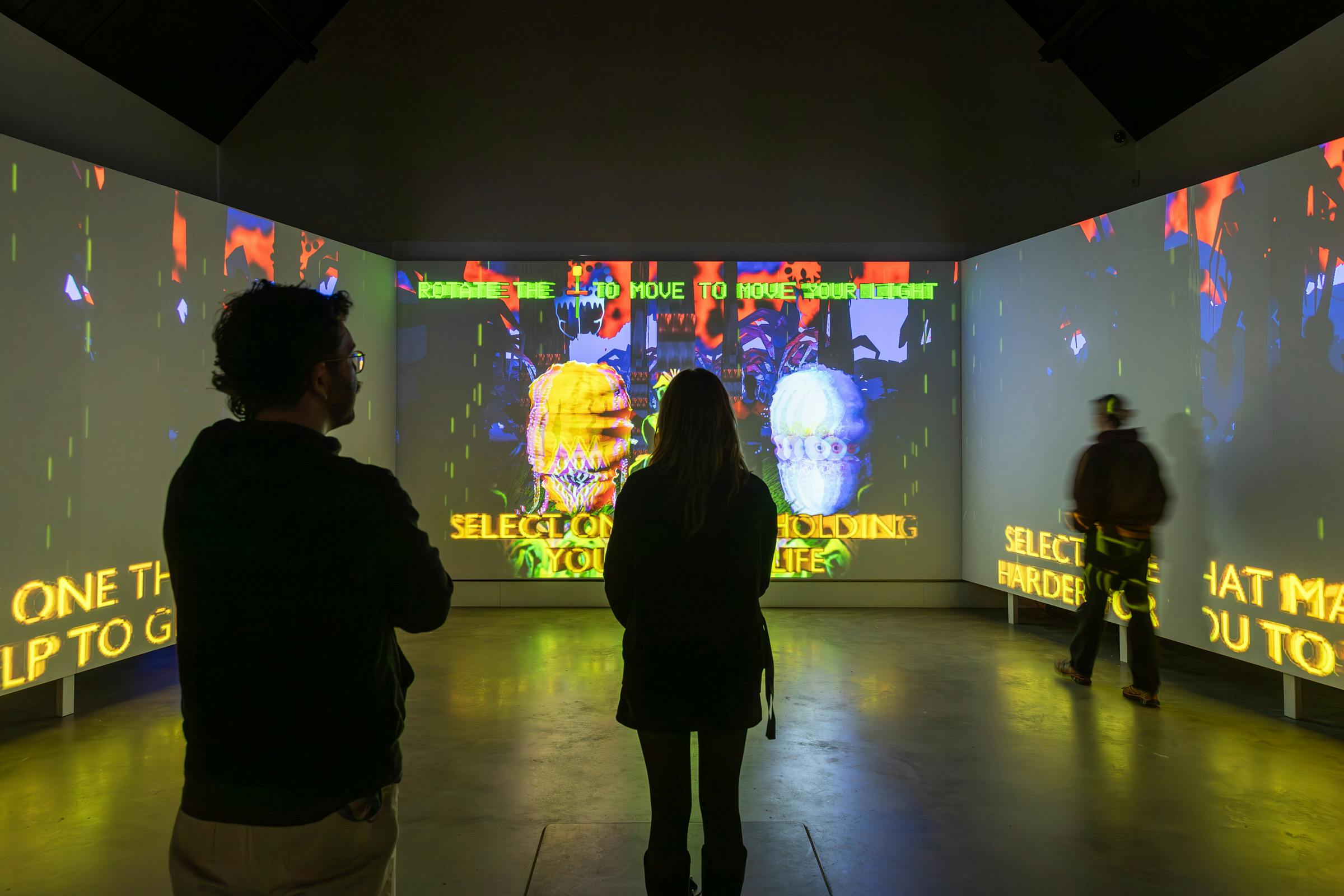Ariel Collier is a budding art historian, prioritising art made by queer and Black artists in the UK and America. Ariel is interested in how phenomenology can be used to interpret diverse pieces of work and how the experience of art can impact the lives of viewers. You can read more of Ariel's work on her blog here.
Ariel Collier on Danielle Brathwaite-Shirley’s TRANS-PORT ME and When Our Worlds Meet
December 2022
TRANS-PORT ME, an eleven minute film accompanied by an integrative online video game entitled When Our Worlds Meet, displayed at Studio Voltaire’s Open House 2022. The work provided a peek into Danielle Brathwaite-Shirley’s extensive archive and ever-expansive body of work.
Danielle describes herself as a ‘virtual trans myst’, referring to a genre of graphic adventure/puzzle gameplay, world-building and signalling her trans identity.
The artist’s work in activism started at the age of 17 when she joined the socialist party in South London. Looking to make a difference in her immediate community, she embarked on the work – and art – of archiving Black trans lives through film.
Since, historically, trans lives have been either ignored or over-sensationalised in the media, Danielle felt it necessary to present her world in a way that promotes the health, safety and wellbeing of herself and her chosen family. Her work phenomenologically inserts the viewer into the thoughts and lives of black trans women struggling to be accurately and ethically represented, allowing the viewer to imagine a better, more inclusive and equitable world with her. Danielle started with filming her friends dancing and replacing their hair and background with green screens, eventually moving to rendering versions of them in utopian environments using software like Blender.
TRANS-PORT ME is one of many works in Danielle’s archive that evolved from these early experimentations. Split into three parts, the first segment comprises a freestyled lyric-video sung, rapped and visualised by Danielle. Her song making process is meditative and strict – only ever using the first take of her freestyles. She includes these songs in her work to evoke flow and to connote the process of healing.
The second segment of the film uses text to surface some of the most pressing contemporary systemic barriers and forms of violence facing trans people today, such as the NHS ‘transitioning assessment', widely perceived to be a test that demands patients prove their trans identity in order to receive hormone treatment, medication and other vital and often life-saving gender-affirming healthcare.
The final minutes of the piece represent Danielle’s resolve to shed her cocoon to take the necessary measures to keep herself safe, such as taking an Uber home or asking for support – archiving her memories for the next person that may need them.
Drawing on contemporary cultural references, such as a chopped and screwed version of Kodak Black's Rollin Peace ft. XXXTENTACION, Danielle nods to the 2010s, the era in which the film was made. Although the work of these artists was and is trans/homophobic, Danielle reimagines the artists as trans people themselves, animating Kodak Black as a trans woman. Kodak Black's song Transportin inspired Danielle to imagine what it would be like to transport oneself from one place to another to avoid and evade harm.
When Our Worlds Meet is where TRANS-PORT ME is brought to life, allowing players to make decisions about everyday activities; having a night out safely or what to do in a spiritually attentive environment. In this idyllic universe, autonomy is sacred, but if you do not support trans lives, you are kindly asked to leave.”
Ariel Collier, December 2022
This article was written by Ariel Collier in collaboration with Danielle Brathwaite-Shirley. It was commissioned by Studio Voltaire as part of Danielle Brathwaite-Shirley’s residency, supported by Meta Open Arts.
Brathwaite-Shirley's work is on display at FACT Liverpool until 23 April 2023, as part of a free immersive exhibition, alongside Josèfa Ntjam. You can also find her collection of NFTs on Foundation.app.

